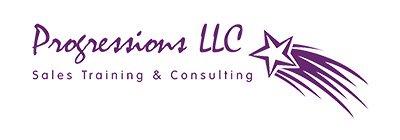Ask Open Ended Questions to Help Your Customer
When I conducts sales and service training, I tell the story of a man making his debut into the Beverly Hills “jet set.” All evening long the man went around asking people questions about themselves. He never once revealed any information about himself. Over the next few days the hostess received no less than five phone calls wanting to know who that charming gentlemen was. People remarked what a wonderful conversationalist he was.
“The man impressed people because he used the art of asking open-ended questions. They got to talk and he listened,” Giuliani says. “People love to talk about themselves.” Great sales and service providers recognize this truth. They encourage customer dialogue and listen well.
Invite Customer Participation
Asking open questions sets the tone for expansive responses from customers. This means you gather lots of valuable information about customers’ needs and you develop a relationship. “Without open questions, the whole relationship development or management aspect is nearly impossible,” says Giuliani.
A closed question is prefixed with a phrase such as did you, would you, or could you. “You’ve done all the thinking yourself. It’s a very directive question. The customer would simply respond with a yes or no,” Giuliani continues. “If you phrase questions openly, however, they direct customers to share interesting facts about themselves, their goals, and what is really important to them in a financial institution.”
Asking open questions is an art. It’s a skill that has to be honed and practiced. “You have to force your mind to continually give someone else the podium. Why? Because the truth is we all love to talk about ourselves, our products, and our company,” says Giuliani.
A Smart Strategy
“Asking open questions coupled with being a good listener makes you the perfect sales and service person,” believes Giuliani. Here’s why:
Demonstrates genuine interest in the customer. “You’re asking their opinion as opposed to telling them yours. “This dance between asking and telling is an important one,” Giuliani says. “I like calling it a dance, because one person follows the other in a dance. Top-notch service providers follow their customers.”
Shows customers you value their input. You immediately get the customer’s buy-in because it’s their answer, what they value, and their opinion.
Helps you better identify needs. When you don’t ask good questions, you’re guessing which products are best for people. “Customers tell you what they want,” Giuliani says. “Asking open questions and being a good listener is a magic combination to true customer service and sales.”
While doing mystery shops, Giuliani will tell an employee I want to chat with you about a checking account. “It’s amazing how often the rep just starts talking. He or she does a “spray and pray” and pours out all sorts of information about the institution’s checking products hoping something will stick, instead of asking what’s important to the customer,” she says.
Creates happier customers. Customers are more engaged with you in meaningful dialogue. People walk away thinking this is a different kind of financial institution.
Shows that you are a professional. You’re more proficient at gathering all kinds of information to help your customer. That information then helps you select the right product or service that genuinely benefits the customer.
How to Frame Open Questions
“I recommend asking two to three open questions before you ever get to the presentation,” Giuliani says. “Spend some time finding out the person’s preferences and life styles. Both impact needs. Discover what’s important to your customer.”
Open questions are phrased to almost force the responder to elaborate. Phrases like tell me, how, what is your opinion, and how do you feel are great introductions for open questions. Giuliani offers these examples:
· What is important to you in a…? - Fill in the question with financial institution or the product you’re discussing such as a checking account.
· How did you hear about us? - When you ask this question and they say a neighbor or business referred them, the classy response is that’s wonderful or great. Who is the person? I will send them a thank you. “You’re showing that you are a classy institution and you’re going to take the extra step to send an acknowledgement. It’s also a good way to make contact with the referrer,” explains Giuliani.
· Tell me about your previous financial institution and what you used. - That’s a combination of two open questions.
· Tell me a little bit about yourself. - “This is my favorite question because it can reveal so much about the customer,” says Giuliani. For example, the customer may say I’ve just moved here from Florida. Is he or she looking for a house? If so, this person may be a good prospect for a mortgage loan.
When people start talking about themselves, they share information about life events such as marriage, changing jobs, retirement, children and educational plans, etc. Life events often translate into special financial needs.
Get Employees Onboard
To help employees master the art of asking open questions, Giuliani suggests:
Let employees experience the difference. Have one person ask only closed questions and then have someone else ask open questions. Discuss what each approach feels like.
Do role-plays in staff meetings. Give employees opportunities to practice asking open questions.
Catch employees doing it right. Compliment their behavior.
